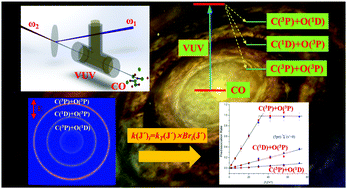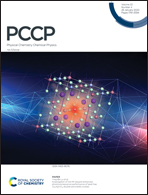Channel-resolved rotationally dependent predissociation rate constants reveal the state-to-state dissociation dynamics of carbon monoxide in electronically excited states
Abstract
Rotational dependence of the total predissociation rate constants deduced from linewidth measurements in spectroscopic studies have often been used to predict the possible electronic coupling schemes in the photodissociation process of carbon monoxide (CO), while the intrinsic multi-channel characteristics of CO photodissociation make the prediction unreliable and sometimes misleading conclusions could be reached. Here, we demonstrate for the first time in the Rydberg 4p(2) and 5p(0) complexes region of 13C16O that absolute partial predissociation rate constants into each individual channel and their dependences on the rotational quantum numbers can be obtained through branching ratio measurements in combination with the total predissociation rate constants reported in spectroscopic studies. These channel-resolved rotationally dependent predissociation rate constants are found to unambiguously reveal the detailed state-to-state photodissociation dynamics of CO, which is not available from either the branching ratio or the total predissociation rate constant measurements individually.



 Please wait while we load your content...
Please wait while we load your content...